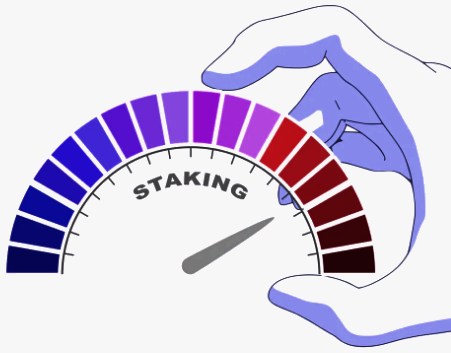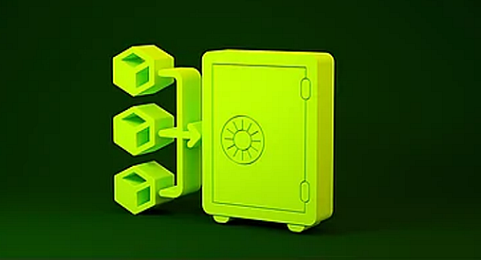Accredited InvestorsAltcoinAnatoli UnitskyAnti-Money Laundering (AML) In CryptoAPIArbitrageArtCoin TokenArticle DirectoryASICAuction Terminology GlossaryBasics of Stock Market InvestingBear MarketBest Crypto Payment Provider In the WorldBitcoinBlockchainBlockchain ConfirmationBlockchain Consensus MechanismBlockchain ForkBlockchain GlossaryBored Ape Yacht ClubBuild a Business That OutperformsBull MarketBuying SkyWay SharesByzantine Fault Tolerance (BFT) ExplainedCasascius CoinCentral Bank Digital Currency (CBDC)Centralized Crypto ExchangeCoinCoinsetCold WalletCollateralCommodity Futures Trading Commission (CFTC)Cross-Chain TechnologyCRUCrypto ExchangeCrypto GlossaryCrypto JokesCrypto Terms to KnowCrypto TickerCryptocurrencyCryptographyCryptojackingCryptounit BlockchainCryptounit GlossaryCryptounit ProgramdApp (Decentralized Application)Dead CoinDecentralized Exchange (DEX)Decentralized Finance (DeFi)Difference Between Bitcoin and EthereumDifferent Ways of Investing MoneyDigital CurrencyDistributed LedgerDo Your Own Research (DYOR)Dollar Cost Averaging (DCA)Dow Jones Industrial Average (DJIA)EncryptionERC-20ERC-721EthereumEvoScentFear Of Missing Out (FOMO)Fear, Uncertainty and Doubt (FUD)Fiat MoneyFNT Fintech CompanyGenesis BlockGlobal Unit PayGlossary of Banking TermsGlossary of Business TermsGlossary of Financial TermsHalvingHODLHot WalletHow Do I Start InvestingHow Rich is Satoshi Nakamoto?How to Create a BlockchainHow to Find Private InvestorsHow to Get Into FintechHow to Program Smart ContractsI Am Thrilled to Be a Part of This Global ProjectInitial Coin Offering (ICO)Initial Public Offering (IPO)Initial Token Offering (ITO)Innovation Basalt TechnologyInnovative Transportation TechnologiesInternational Bank Account Number (IBAN)Investing in Gold Mining StocksInvesting in Gold MiningJagerJoy of Missing Out (JOMO)Know Your Customer (KYC)LedgerLiquidity in CryptocurrencyMaker and Taker Fees in Crypto TradingMarket Capitalization (Market Cap)Meme CoinMetal Credit CardMetaMaskMillenials Now Have Access to Generational WealthMy Best Investment EverNew Digital EvolutionNFT GlossaryOff-Chain TransactionsOn-Chain TransactionsOpen Edition NFTPeer-to-Peer (P2P)Personal Loan GlossaryProbably the Best STO on the MarketProof of Stake (PoS)Real Estate Glossary of TermsReal Estate Investing GlossaryRebase TokenSecurities and Exchange Commission (SEC)Security Token ExchangesSecurity Token Offering (STO)Soulbound Decentralized Identities for Security TokensSoulbound ID Launch by Stobox Proves a SuccessSoulbound TokensStoboxStock Market GlossaryTestimonialsTether Platform and Token (USDT)UnitEx ExchangeUnitsky String TechnologiesUNTBUSDUValidatorWe Started Investing When We Were 25What are Blue Chip NFT?What are Blue Chip Stocks?What are Crypto Assets?What are Crypto Smart Contracts?What are CryptoPunks NFT?What are Digital Assets?What are Digital Collectibles?What are Gas Fees?What are Gas Wars?What are Hashmasks?What are Non Fungible Tokens?What are Non-Sufficient Funds (NSF)?What are Soulbound Tokens (SBT)?What are Stablecoins in Crypto?What are Transactions Per Second (TPS)?What are Utility NFTs?What are Utility Tokens?What Does Burning Crypto Mean?What Does Diamond Hands Mean?What Does Paper Hands Mean?What Does To The Moon Mean?What Does WAGMI Mean?What Happened to Satoshi Nakamoto?What is a 51% Attack?What is a Baby Boomer?What is a Backlink?What is a Banner?What is a Barcode?What is a Bid-Ask Spread in Crypto?What is a Block in Blockchain?What is a Block Reward?What is a Blockchain Address?What is a Blockchain Node?What is a Blockchain Oracle?What is a Blog?What is a Bond?What is a Bot?What is a Broker?What is a Business Accelerator?What is a Cash Cow?What is a Commercial Bank?What is a Commodity?What is a Con?What is a Credit?What is a Credit Limit?What is a Credit Rating?What is a Crypto Airdrop?What is a Crypto Bridge?What is a Crypto Scam?What is a Crypto Token?What is a Crypto Wallet?What is a Crypto Whale?What is a Crypto Winter?What is a Cryptocurrency Public Ledger?What is a Cryptocurrency Roadmap?What is a DAO?What is a Dark Pool?What is a Day Trader?What is a Dead Cat Bounce?What is a Default?What is a Derivative?What is a Digital Credit Card?What is a Fiscal Quarter?What is a Fungible Token?What is a Governance Token?What is a Grace Period?What is a Hard Fork?What is a Hot Wallet?What is a Hybrid Blockchain?What is a Hybrid PoW/PoS?What is a Joint Account?What is a Market Cap?What is a Merkle Tree in Blockchain?What is a Mining Farm?What is a Nonce? What is a PFP NFT?What is a POS System?What is a Prepaid Card?What is a Private Blockchain?What is a Private Key?What is a Public Blockchain?What is a Public Key?What is a Reserve Currency?What is a Ring Signature?What is a Routing Number?What is a Rug Pull in Crypto?What is a Safe Deposit Box?What is a Satoshi?What is a Security Token?What is a Seed Phrase?What is a Shitcoin?What is a Sidechain?What is a Soft Fork?What is a Spot Market?What is a State Bank?What is a SWIFT Code?What is a Tax Identification Number (TIN)?What is a Time Deposit?What is a Transaction Account?What is a Variable Interest Rate?What is a Virtual Assistant (VA)?What is a Virtual Card?What is a Virtual Currency?What is a Visa Card?What is a Whitelist in Crypto?What is a Whitepaper?What is Accounts Payable (AP)?What is AMA in Crypto?What is Amortization?What is an Accrual?What is an ACH Transfer?What is an Actuary?What is an Addendum?What is an Algorithm?What is an Angel Investor?What is an Annuity?What is an Asset?What is an ATM?What is an Atomic Swap?What is an Audit?What is an Avatar?What is an EIN?What is an Embargo?What is an Entrepreneur?What is an IDO (Initial Dex Offering)?What is an Interest Rate?What is an Internet cookie?What is an Investment Bank?What is an NFT Drop?What is an NFT Floor Price?What is an Ommer Block?What is an Orphan Block?What is an Outstanding Check?What is an Overdraft?What is Artificial Intelligence (AI)?What is B2B (Business-to-Business)?What is B2G (Business-to-Government)?What is Bartering?What is Bitcoin Dominance?What is Bitcoin Pizza Day?What is Blockchain Immutability?What is Blockchain Used For?What is BRICS?What is Business-to-Consumer (B2C)?What is C2C (Customer to Customer)?What is Capitalism?What is Catfishing?What is CFD Trading?What is Check Kiting?What is Cloud Mining?What is Communism?What is Content Marketing?What is Decentralization in Blockchain?What is DeFi in Crypto?What is Delisting?What is Depreciation?What is Digital Marketing?What is Diversification?What is Double Spending?What is Dumb Money?What is Dumping?What is Earnings Per Share (EPS)?What is Economics?What is Email Marketing?What is Equity?What is Etherscan?What is Fintech?What is Foreign currency?What is Forex?What is Fundamental Analysis (FA)?What is GameFi?What is Generative Art NFT?What is Gwei?What is Hard Currency?What is Hash Rate?What is Hashing in Blockchain?What is Inflation?What is Initial Game Offering (IGO)?What is Interest?What is Interest Income?What is Mainnet?What is Mastercard?What is Metaverse in Crypto?What is Mining in Cryptocurrency?What is Minting NFT?What is Mobile Banking?What is Money Laundering?What is NFT Alpha?What is NFT Metadata?What is NFT Rarity?What is NGMI Meaning?What is Nominal Interest Rate?What is Online Banking?What is Open-End Credit?What is OpenSea NFT Marketplace?What is Personal Identification Number (PIN)?What is Play-to-Earn?What is Polygon?What is Proof of Authority (PoA)?What is Proof of Work (PoW)?What is Public Key Cryptography?What is Pump and Dump?What is Quantum Computing?What is Refinancing?What is Retail Banking?What is Ripple?What is Sharding?What is Slippage in Crypto?What is Smart Money?What is Solvency?What is Soulbound ID?What is SSL?What is Staking in Cryptocurrency?What is Technical Analysis (TA)?What is Testnet?What is the Ask Price?What is the Better Business Bureau (BBB)?What is the Bid Price?What is the Dark Web?What is the InterPlanetary File System (IPFS)?What is the Gold Standard?What is the Lightning Network?What is the Prime Rate?What is the Sandbox?What is the Secondary Market?What is the World Bank?What is Tier 1 Capital?What is Tokenomics?What is TRC-20?What is Universal Banking?What is Unspent Transaction Output (UTXO)?What is Usury?What is Volatility in Crypto?What is Wash Trading?What is Web3?What is Whisper?What is XRP?What is Zero-Knowledge Proof (ZKP)?Who is Beeple?Who is Satoshi Nakamoto?Who is Vitalik Buterin?Why Tokenization is a Safe HavenWhy You Should Try Your Hand at Trading
What is Staking in Cryptocurrency?
- Home
- Cryptounit Glossary
- What is Staking in Cryptocurrency?
Staking allows crypto holders to earn passive income by participating in the running and maintenance of a blockchain, without needing to sell their digital assets. It is similar to a high-yield savings account, where the stakeholder earns higher returns than traditional interest rates offered by banks.

What is Staking in Cryptocurrency?
Staking should not be confused with lending, though it is similar. Decentralized crypto exchanges rely on automated market maker systems that let you lend funds temporarily to liquidity pools within the AMM (automated market maker). Some refer to locking the funds temporarily in the liquidity pool as staking, but technically this is lending. The outcome is the same, however, you earn interest on funds that you pledge not to withdraw for a certain period.
Staking is the process of locking up cryptocurrency for a certain period to support the operation of a blockchain network. In return for staking, participants earn additional cryptocurrency. This system, known as PoS (proof of stake), is used by many blockchains to validate new transactions and add new blocks. It helps ensure that only legitimate data is added to the blockchain. Participants who stake their funds act as insurance and may lose some or all of their stake if they validate flawed or fraudulent data. However, if they validate correct transactions, they earn more crypto as a reward.
PoS Validation
Staking is a process used by proof of stake cryptocurrencies to maintain a functional network. By staking their cryptocurrency, validators have a chance to add new blocks and earn rewards. The more cryptocurrency staked, the greater the chance of being selected as a validator.
Additionally, when validators attract stake delegations from multiple holders, it acts as proof to the network that the validator is trustworthy, and their votes are weighted proportionally to the amount of stake they have attracted.
Moreover, stake does not have to be held by a single person, a holder can participate in a staking pool, where the pool operator handles the task of validating transactions on the blockchain. Each blockchain has its own rules for validators, for example, Ethereum requires validators to hold at least 32 ETH, but staking pools allow individuals to collaborate with others and stake less than that amount. It's important to note that most staking pools are built through third-party solutions.
Benefits of Staking Cryptocurrencies
Here are some advantages of staking cryptocurrency:
- It offers a simple way to earn interest on your cryptocurrency holdings.
- Unlike crypto mining, staking does not require any specialized equipment.
- By staking, you are contributing to the security and efficiency of the blockchain.
- Staking is more energy efficient than crypto mining.
- The main advantage of staking is the ability to earn more cryptocurrency, with generous interest rates that can reach above 10% or even 20% per year. It can be a highly profitable investment option, and the only requirement is holding crypto that uses the proof-of-stake consensus mechanism.
- Additionally, staking allows you to support the blockchain of the cryptocurrency you are invested in, as these networks rely on stakers to validate transactions and keep everything running smoothly.
If the question is "What is Staking in Cryptocurrency?", the answer would be that staking is a popular method of earning profit in the cryptocurrency market without the need for trading coins.
Disadvantages of Staking Cryptocurrencies
PoS has not been fully tested and proven in terms of security compared to PoW (Proof of Work). The security capabilities of PoS are uncertain, and while a high hash rate provides protection for PoW networks, it is not clear how PoS networks are similarly secured. In theory, an adversary with enough resources could potentially take control of a PoS network.
PoS networks can be controlled by those who hold the most tokens, which means that attacking a PoS network only requires a large amount of money, unlike PoW networks which require large amounts of computing power. PoS coins are pre-mined, meaning that the entire supply is created at once by a few people. Users need to trust that the core developers didn't keep many coins for themselves or that an outside third-party won't acquire enough coins to take control of the network. It is also common for the founders of crypto projects to give pre-mined coins to insiders.
PoS can lead to increased centralization, which goes against the original intention of blockchain technology to be decentralized. Becoming a validator in PoS networks can be more expensive than becoming a miner, which can restrict participation and create centralization. Additionally, centralized exchanges often become validators of PoS coins to share staking rewards with their customers, which further adds to centralization.
Should You Stake Crypto?
Staking is a suitable option for investors looking to earn a steady return on their long-term investments, without worrying about short-term price fluctuations. However, if you may need access to your funds before the staking period ends, you should avoid locking them up for staking.
It is important to thoroughly review the terms of the staking period to understand its duration and the amount of time it would take to withdraw your funds.
To ensure the safety of your investments, it is recommended to work with reputable companies with strong security protocols.
Additionally, be cautious if interest rates seem too good to be true. As with any cryptocurrency investment, staking carries a risk of loss, so it's important to only stake money that you can afford to lose.
Related Articles

Proof of Stake
Along with the PoS model, there are customized versions such as Leased Proof of Stake (LPoS) and Delegated Proof of Stake (DPoS) mechanisms. In addition, there are hybrid...

Validator
A validator is a node in a proof-of-stake (PoS) blockchain network that is responsible for validating transactions and maintaining the integrity of the network. In a PoS blockchain, validators are...

What is Proof of Work
Proof of Work is a more traditional method to award miners for their effort. It requires miners to show their effort by tying a variable to the process of hashing a transaction. A hashed block proves work was...
- Home
- Cryptounit Glossary
- What is Staking in Cryptocurrency?